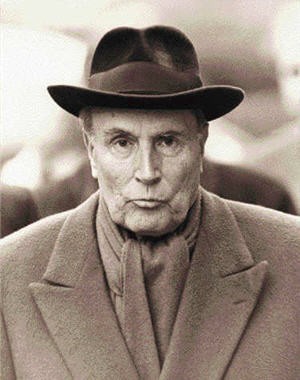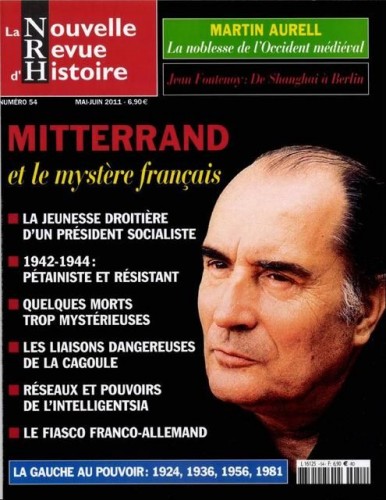Christophe Dolbeau:
Croatie 1945: une nation décapitée
 Particulièrement impitoyable, la guerre à laquelle fut confronté l’État Indépendant Croate entre 1941 et 1945 s’est achevée, en mai 1945, par l’ignoble massacre de Bleiburg (1). Tueries massives de prisonniers civils et militaires, marches de la mort, camps de concentration (2), tortures, pillages, tout est alors mis en œuvre pour écraser la nation croate et la terroriser durablement. La victoire militaire étant acquise (3), les communistes entreprennent, en effet, d’annihiler le nationalisme croate : pour cela, il leur faut supprimer les gens qui pourraient prendre ou reprendre les armes contre eux, mais aussi éliminer les « éléments socialement dangereux », c’est à dire la bourgeoisie et son élite intellectuelle « réactionnaire ». Pour Tito et les siens, rétablir la Yougoslavie et y installer définitivement le marxisme-léninisme implique d’anéantir tous ceux qui pourraient un jour s’opposer à leurs plans (4). L’Épuration répond à cet impératif : au nom du commode alibi antifasciste, elle a clairement pour objectif de décapiter l’adversaire. Le plus souvent d’ailleurs, on ne punit pas des fautes ou des crimes réels mais on invente toutes sortes de pseudo délits pour se débarrasser de qui l’on veut. Ainsi accuse-t-on, une fois sur deux, les Croates de trahison alors que personne n’ayant jamais (démocratiquement) demandé au peuple croate s’il souhaitait appartenir à la Yougoslavie, rien n’obligeait ce dernier à lui être fidèle ! Parallèlement, on châtie sévèrement ceux qui ont loyalement défendu leur terre natale, la Croatie. De nouvelles lois permettent de s’affranchir des habituelles lenteurs judiciaires : lorsqu’on n’assassine pas carrément les gens au coin d’un bois, on les défère devant des cours martiales qui sont d’autant plus expéditives que les accusés y sont généralement privés de défense et contraints de plaider coupable…
Particulièrement impitoyable, la guerre à laquelle fut confronté l’État Indépendant Croate entre 1941 et 1945 s’est achevée, en mai 1945, par l’ignoble massacre de Bleiburg (1). Tueries massives de prisonniers civils et militaires, marches de la mort, camps de concentration (2), tortures, pillages, tout est alors mis en œuvre pour écraser la nation croate et la terroriser durablement. La victoire militaire étant acquise (3), les communistes entreprennent, en effet, d’annihiler le nationalisme croate : pour cela, il leur faut supprimer les gens qui pourraient prendre ou reprendre les armes contre eux, mais aussi éliminer les « éléments socialement dangereux », c’est à dire la bourgeoisie et son élite intellectuelle « réactionnaire ». Pour Tito et les siens, rétablir la Yougoslavie et y installer définitivement le marxisme-léninisme implique d’anéantir tous ceux qui pourraient un jour s’opposer à leurs plans (4). L’Épuration répond à cet impératif : au nom du commode alibi antifasciste, elle a clairement pour objectif de décapiter l’adversaire. Le plus souvent d’ailleurs, on ne punit pas des fautes ou des crimes réels mais on invente toutes sortes de pseudo délits pour se débarrasser de qui l’on veut. Ainsi accuse-t-on, une fois sur deux, les Croates de trahison alors que personne n’ayant jamais (démocratiquement) demandé au peuple croate s’il souhaitait appartenir à la Yougoslavie, rien n’obligeait ce dernier à lui être fidèle ! Parallèlement, on châtie sévèrement ceux qui ont loyalement défendu leur terre natale, la Croatie. De nouvelles lois permettent de s’affranchir des habituelles lenteurs judiciaires : lorsqu’on n’assassine pas carrément les gens au coin d’un bois, on les défère devant des cours martiales qui sont d’autant plus expéditives que les accusés y sont généralement privés de défense et contraints de plaider coupable…
Émanant d’un pouvoir révolutionnaire, aussi illégal qu’illégitime, cette gigantesque purge n’est pas seulement une parodie de justice mais c’est aussi une véritable monstruosité : en fait, on liquide des milliers d’innocents, uniquement parce qu’ils sont croates ou parce qu’on les tient pour idéologiquement irrécupérables et politiquement gênants. Au démocide (5) aveugle et massif qu’incarnent bien Bleiburg et les Marches de la Mort s’ajoute un crime encore plus pervers, celui que le professeur Nathaniel Weyl a baptisé aristocide et qui consiste à délibérément priver une nation de son potentiel intellectuel, spirituel, technique et culturel (« J’ai utilisé ce terme (aristocide) », écrit l’universitaire américain, « pour évoquer l’extermination de ce que Thomas Jefferson appelait ‘l’aristocratie naturelle des hommes’, celle qui repose sur ‘la vertu et le talent’ et qui constitue ‘le bien le plus précieux de la nature pour l’instruction, l’exercice des responsabilités et le gouvernement d’une société’. Jefferson estimait que la conservation de cette élite était d’une importance capitale »)-(6). Dans cette perspective, les nouvelles autorités ont quatre cibles prioritaires, à savoir les chefs militaires, les leaders politiques, le clergé et les intellectuels.
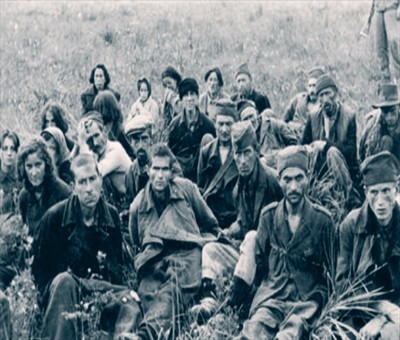
Delenda est Croatia
Au plan militaire et contrairement à toutes les traditions de l’Europe civilisée, les communistes yougoslaves procèdent à l’élimination physique de leurs prisonniers, surtout s’ils sont officiers. Pour la plupart des cadres des Forces Armées Croates, il n’est pas question de détention dans des camps réservés aux captifs de leur rang, comme cela se fait un peu partout dans le monde (et comme le faisait le IIIe Reich…). Pour eux, ce sont des cachots sordides, des violences et des injures, des procédures sommaires et au bout du compte, le gibet ou le poteau d’exécution. Il n’y a pas de circonstances atténuantes, aucun rachat n’est offert et aucune réinsertion n’est envisagée. Près de 36 généraux (7) sont ainsi « officiellement » liquidés et une vingtaine d’autres disparaissent dans des circonstances encore plus obscures. Colonels, commandants, capitaines, lieutenants et même aspirants – soit des gens d’un niveau culturel plutôt plus élevé que la moyenne – font l’objet d’un traitement spécialement dur et le plus souvent funeste. De cette façon, plusieurs générations de gens robustes et éduqués sont purement et simplement supprimées. Leur dynamisme, leur courage et leurs capacités feront cruellement défaut…
Vis-à-vis du personnel politique non-communiste, les méthodes d’élimination sont tout aussi radicales. Les anciens ministres ou secrétaires d’État de la Croatie indépendante, tout au moins ceux que les Anglo-Saxons veulent bien extrader (8), sont tous rapidement condamnés à mort et exécutés (9). Les « tribunaux » yougoslaves n’établissent pas d’échelle des responsabilités et n’appliquent qu’une seule peine. Disparaissent dans cette hécatombe de nombreux hommes cultivés et expérimentés, certains réputés brillants (comme les jeunes docteurs Julije Makanec, Mehmed Alajbegović et Vladimir Košak), et dont beaucoup, il faut bien le dire, n’ont pas grand-chose à se reprocher. Leur honneur est piétiné et la nation ne bénéficiera plus jamais de leur savoir-faire. (Remarquons, à titre de comparaison, qu’en France, la plupart des ministres du maréchal Pétain seront vite amnistiés ou dispensés de peine). La même vindicte frappe la haute fonction publique : 80% des maires, des préfets et des directeurs des grands services de l’État sont assassinés, ce qui prive ex abrupto le pays de compétences et de dévouements éprouvés. On les remplacera au pied levé par quelques partisans ignares et l’incurie s’installera pour longtemps. Moins brutalement traités (encore que plusieurs d’entre eux se retrouvent derrière les barreaux, à l’instar d’August Košutić ou d’Ivan Bernardic) mais tenus pour de dangereux rivaux, les dirigeants du Parti Paysan sont eux aussi irrémédiablement exclus de la scène politique ; leur formation politique, la plus importante du pays, est dissoute, tout comme les dizaines de coopératives et d’associations, sociales, culturelles, syndicales ou professionnelles, qui en dépendent… Coupé de ses repères traditionnels, le monde rural est désormais mûr pour la socialisation des terres et pour les calamiteuses « zadrougas » que lui impose l’omnipotente bureaucratie titiste.
Mort aux « superstitions »
Convaincus en bons marxistes que la religion est une superstition et que c’est bien « l’opium du peuple », les nouveaux dirigeants yougoslaves témoignent à l’égard des églises d’une hargne morbide. Les deux chefs de l’Église Orthodoxe Croate, le métropolite Germogen et l’éparque Spiridon Mifka sont exécutés ; âgé de 84 ans, le premier paie peut-être le fait d’avoir été, autrefois, le grand aumônier des armées russes blanches du Don… Du côté des évangélistes, l’évêque Filip Popp est lui aussi assassiné ; proche des Souabes, il était devenu encombrant… Vis-à-vis des musulmans, la purge n’est pas moins implacable : le mufti de Zagreb, Ismet Muftić, est publiquement pendu devant la mosquée (10) de la ville, tandis que dans les villages de Bosnie-Herzégovine, de nombreux imams et hafiz subissent un sort tout aussi tragique. Mais le grand ennemi des communistes demeure sans conteste l’Église Catholique contre laquelle ils s’acharnent tout particulièrement (11). Au cours de la guerre, le clergé catholique avait déjà fait l’objet d’une campagne haineuse, tant de la part des tchetniks orthodoxes que des partisans athées. Des dizaines de prêtres avaient été tués, souvent dans des conditions atroces comme les Pères Juraj Gospodnetić et Pavao Gvozdanić, tous deux empalés et rôtis sur un feu, ou les Pères Josip Brajnović et Jakov Barišić qui furent écorchés vifs (12). À la « Libération », cette entreprise d’extermination se poursuit : désignés comme « ennemis du peuple » et « agents de la réaction étrangère », des centaines de religieux sont emprisonnés et liquidés (13), les biens de l’Église sont confisqués et la presse confessionnelle interdite. « Dieu n’existe pas » (Nema Boga) récitent désormais les écoliers tandis que de son côté, l’académicien Marko Konstrenčić proclame fièrement que « Dieu est mort » (14). Au cœur de cette tempête anticléricale, la haute hiérarchie n’échappe pas aux persécutions : deux évêques (NN.SS. Josip Marija Carević et Janko Šimrak) meurent aux mains de leurs geôliers ; deux autres (NN.SS. Ivan Šarić et Josip Garić) doivent se réfugier à l’étranger ; l’archevêque de Zagreb (Mgr Stepinac) est condamné à 16 ans de travaux forcés et l’évêque de Mostar (Mgr Petar Čule) à 11 ans de détention. D’autres prélats (NN.SS. Frane Franić, Lajčo Budanović, Josip Srebrnić, Ćiril Banić, Josip Pavlišić, Dragutin Čelik et Josip Lach) sont victimes de violentes agressions (coups et blessures, lapidation) et confrontés à un harcèlement administratif constant (15). En ordonnant ou en couvrant de son autorité ces dénis de justice et ces crimes, le régime communiste entend visiblement abolir la religion et anéantir le patrimoine spirituel du peuple croate. Odieuse en soi, cette démarche totalitaire n’agresse pas seulement les consciences mais elle participe en outre de l’aristocide que nous évoquions plus haut car elle prive, parfois définitivement, le pays de très nombreux talents et de beaucoup d’intelligence. Au nombre des prêtres sacrifiés sur l’autel de l’athéisme militant, beaucoup sont, en effet, des gens dont la contribution à la culture nationale est précieuse, voire irremplaçable (16).
Terreur culturelle
Un quatrième groupe fait l’objet de toutes les « attentions » des épurateurs, celui des intellectuels. Pour avoir une idée de ce que les communistes purs et durs pensent alors de cette catégorie de citoyens, il suffit de se rappeler ce que Lénine lui-même en disait. À Maxime Gorki qui lui demandait, en 1919, de se montrer clément envers quelques savants, Vladimir Oulianov répondait brutalement que « ces petits intellectuels minables, laquais du capitalisme (…) se veulent le cerveau de la nation » mais « en réalité, ce n’est pas le cerveau, c’est de la merde » (17). Sur de tels présupposés, il est évident que les Croates qui n’ont pas fait le bon choix peuvent s’attendre au pire. Dès le 18 mai 1944, le poète Vladimir Nazor (un marxiste de très fraîche date)-(18) a d’ailleurs annoncé que ceux qui ont collaboré avec l’ennemi et fait de la propagande par la parole, le geste ou l’écrit, surtout en art en en littérature, seront désignés comme ennemis du peuple et punis de mort ou, pour quelques cas exceptionnels, de travaux forcés (19). La promesse a le mérite d’être claire et l’on comprend pourquoi le consul de France à Zagreb, M. André Gaillard, va bientôt qualifier la situation de « Terreur Rouge » (20)…
Les intentions purificatoires du Conseil Antifasciste de Libération ne tardent pas à se concrétiser et leurs effets sont dévastateurs. À Bleiburg comme aux quatre coins de la Croatie, la chasse aux intellectuels mal-pensants est ouverte. Dans la tourmente disparaissent les écrivains Mile Budak, Ivan Softa, Jerko Skračić, Mustafa Busuladžić, Vladimir Jurčić, Gabrijel Cvitan, Marijan Matijašević, Albert Haller et Zdenka Smrekar, ainsi que les poètes Branko Klarić, Vinko Kos, Stanko Vitković et Ismet Žunić. Échappant à la mort, d’autres écopent de lourdes peines de prison à l’instar de Zvonimir Remeta (perpétuité), Petar Grgec (7 ans), Edhem Mulabdić, Alija Nametak (15 ans) ou Enver Čolaković. Bénéficiant d’une relative mansuétude, quelques-uns s’en sortent mieux comme les poètes Tin Ujević et Abdurezak Bjelevac ou encore l’historien Rudolf Horvat qui se voient simplement interdire de publier. Tenus pour spécialement nocifs, les journalistes subissent quant à eux une hécatombe : Josip Belošević, Franjo Bubanić, Boris Berković, Josip Baljkas, Mijo Bzik, Stjepan Frauenheim, Mijo Hans, Antun Jedvaj, Vjekoslav Kirin, Milivoj Magdić, Ivan Maronić, Tias Mortigjija, Vilim Peroš, Đuro Teufel, Danijel Uvanović et Vladimir Židovec sont assassinés, leur collègue Stanislav Polonijo disparaît à Bleiburg, tandis que Mladen Bošnjak, Krešimir Devčić, Milivoj Kern-Mačković, Antun Šenda, Savić-Marković Štedimlija, le Père Čedomil Čekada et Theodor Uzorinac sont incarcérés, parfois pour très longtemps (21).
La répression frappe très largement et les gens de presse ou les écrivains sont loin d’être les seuls à passer au tamis de la Commission d’enquête sur les crimes de collaboration culturelle avec l’ennemi (Anketna komisija za utvrdjivanje zločina kulturnom suradnjom s neprijateljem). Une « grande peur », pour reprendre l’expression de Bogdan Radica (22), règne sur la Croatie où des milliers de citoyens sont contraints de répondre à un questionnaire inquisitorial (le fameux Upitni arak). Artistes, universitaires, magistrats, médecins, personnels des hôpitaux, membres des institutions scientifiques ou sportives, tous sont visés et pour ceux qui ne satisfont pas aux nouvelles normes, la sanction est immédiate. Au nombre des plus sévèrement « punis », citons l’architecte Lovro Celio-Cega, le diplomate Zvonko Cihlar, le banquier Emil Dinter, l’ingénieur naval Đuro Stipetić ou les médecins Šime Cvitanović et Ljudevit Jurak (23), tous assassinés. Chez les musiciens, les peines sont plus légères : le compositeur (et franciscain) Kamilo Kob se voit tout de même infliger 6 ans de prison et son collègue Zlatko Grgošević 6 mois de travaux forcés, tandis que le célèbre maestro Lovro Matačić passe 10 mois derrière les barbelés et que son confrère Rado degl’Ivellio est chassé du Théâtre National. Le peintre (et prêtre) Marko Ćosić est condamné à 10 ans d’incarcération et le sculpteur Rudolf Švagel-Lešić à 5 ans de la même peine ; plus chanceux, les peintres Oto Antonini, Ljubo Babić et Rudolf Marčić sont simplement interdits d’exposition. Le ratissage entrepris par la police politique est très systématique et des gens très divers, souvent peu politisés, se retrouvent au bagne comme le chansonnier Viki Glovački, le photographe Ljudevit Kowalsky, le géographe Oto Oppitz, le financier Branko Pliverić ou l’orientaliste Hazim Šabanović.
D’une brutalité inouie, cette grande purge cause dans la société croate un traumatisme profond, d’autant qu’elle s’accompagne de l’émigration massive et définitive de ceux qui parviennent à passer au travers des mailles du filet. Notons que pour parachever leur travail de déculturation, les communistes procèdent dans le même temps au nettoyage des bibliothèques publics et privées afin d’en extraire les « mauvaises » références. Sont ainsi pilonnés les ouvrages « oustachis » (y compris des éditions de Racine, Hugo ou Dostoïevski dont la seule « tare » est d’avoir eu recours à l’orthographe en vigueur sous l’État Indépendant Croate) et les « livres de l’ennemi », c’est à dire tous ceux qui sont rédigés en italien ou en allemand. On jette par exemple les textes de Nietzsche, Kant ou Dante ainsi que des traductions d’Eschyle, Homère, Sophocle, Euripide et Tacite (24)… Chef de l’Agitprop, Milovan Đilas (la future coqueluche des libéraux de Saint-Germain-des-Prés) recommande, en janvier 1947, de se débarrasser des livres de Roald Amundsen mais aussi des œuvres toxiques de Bernard Shaw et Gustave Flaubert (25). Restent toutefois, pour ceux qui veulent se cultiver, les ouvrages édifiants de Marx, Lénine et Dietzgen ( ! ) ou ceux des nouveaux maîtres à penser que sont Đilas, Kardelj et « Čiča Janko » (Moša Pijade)…
Au terme de ce bref et sinistre panorama, il semble bien que l’on puisse, sans exagération, considérer l’épuration communiste de la Croatie comme un aristocide. Cruelle et imbécile, cette « chasse aux sorcières » n’a jamais eu pour but de châtier de quelconques « criminels fascistes » (il n’y en avait guère) mais bien de se débarrasser d’une intelligentsia supposément hostile et de priver la Croatie d’une grande partie de ses moyens afin de faire place nette aux apparatchiks du nouveau régime. L’opération a, hélas, parfaitement atteint ses objectifs et la Croatie mettra près de 25 ans à se doter d’une nouvelle élite digne de ce nom, puis encore 20 ans à émerger définitivement du cauchemar yougo-communiste !
Christophe Dolbeau
Notes
(1) Voir C. Dolbeau, « Bleiburg, démocide yougoslave », in Tabou, vol. 17, Akribeia, Saint-Genis-Laval, 2010, 7-26.
(2) À propos de ces camps, le témoin britannique Frank Waddams (qui résidait en Yougoslavie à la fin de la guerre) affirme que « la famine, la surpopulation, la brutalité et la mortalité en faisaient des endroits bien pires que Dachau ou Buchenwald » – cf. N. Beloff, Tito’s flawed legacy, London, Victor Gollancz, 1985, p. 134.
(3) Grâce, il faut bien le dire, à une aide massive des Alliés comme en atteste par exemple l’ampleur exceptionnelle de l’ « Opération Audrey » – voir Louis Huot, Guns for Tito, New York, L. B. Fischer, 1945 et Kirk Ford Jr, OSS and the Yugoslav Resistance, 1943-1945, College Station, TAMU Press, 2000.
(4) « Après la fondation de l’État, l’objectif suivant fut d’amener la nation à accepter à 100% le Parti Communiste et son monopole idéologique, ce qui fut d’abord obtenu par la persécution et en compromettant les adversaires de diverses manières, puis en veillant à éradiquer toute pensée hétérodoxe, c’est à dire divergeant ne serait-ce que de façon minime du point de vue du Comité Central du Parti Communiste » – D. Vukelić, « Censorship in Yugoslavia between 1945 and 1952 – Halfway between Stalin and West », Forum de Faenza, IECOB, 27-29 septembre 2010, p. 6.
(5) Voir R. J. Rummel, Death by Government, chapitre 2 (Definition of Democide), New Brunswick, Transaction Publishers, 1994.
(6) cf. N. Weyl, « Envy and Aristocide », in The Eugenics Bulletin, hiver 1984. Voir également T. Sunić, « Sociobiologija Bleiburga », in Hrvatski List du 3 mars 2009 (repris dans The Occidental Observer du 15 mars 2009, sous le titre de « Dysgenics of a Communist Killing Field : the Croatian Bleiburg »).
(7) Junuz Ajanović, Edgar Angeli, Oton Ćuš, Franjo Dolački, Stjepan Dollezil, Julije Fritz, Mirko Gregorić, Đuro Grujić (Gruić), August Gustović, Muharem Hromić, Vladimir Kren, Slavko Kvaternik, Vladimir Laxa, Rudolf Lukanc, Bogdan Majetić, Ivan Markulj, Vladimir Metikoš, Josip Metzger, Stjepan Mifek, Ante Moškov, Antun Nardelli, Miroslav Navratil, Franjo Nikolić, Ivan Perčević, Makso Petanjek, Viktor Prebeg, Antun Prohaska, Adolf Sabljak, Tomislav Sertić, Vjekoslav Servatzy, Slavko Skolibar, Nikola Steinfl, Josip Šolc, Slavko Štancer, Ivan Tomašević, Mirko Vučković.
(8) Voir J. Jareb, « Sudbina posljednje hrvatske državne vlade i hrvatskih ministara iz drugog svjetskog rata », in Hrvatska Revija, N°2 (110), juin 1978, 218-224.
(9) Tel est le cas de M.M. Mehmed Alajbegović, Mile Budak, Pavao Canki, Vladimir Košak, Osman Kulenović, Živan Kuveždić, Slavko Kvaternik, Julije Makanec, Nikola Mandić, Miroslav Navratil, Mirko Puk et Nikola Steinfl.
(10) Le bâtiment sera fermé et ses minarets abattus en 1948.
(11) Au sujet de la querelle entre l’Église Catholique et l’État communiste yougoslave, voir l’article de B. Jandrić [« Croatian totalitarian communist government’s press in the preparation of the staged trial against the archbishop of Zagreb Alojzije Stepinac (1946) », in Review of Croatian History, vol. I, N°1 (décembre 2005)] et l’ouvrage de M. Akmadža (Katolička crkva u Hrvatskoj i komunistički režim 1945.-1966., Rijeka, Otokar Keršovani, 2004).
(12) cf. Ante Čuvalo, « Croatian Catholic Priests, Theology Students and Religious Brothers killed by Communists and Serbian Chetniks in the Former Yugoslavia during and after World War II » – http://www.cuvalo.net/?p=46
(13) Signée par les évêques croates, une lettre pastorale du 20 septembre 1945 fait état de 243 prêtres assassinés, 169 emprisonnés et 89 disparus ; en septembre 1952, un autre document épiscopal parle de 371 religieux tués, 96 disparus, 200 emprisonnés et 500 réfugiés – cf. Th. Dragoun, Le dossier du cardinal Stepinac, Paris, NEL, 1958. Voir aussi I. Omrčanin, Martyrologe croate. Prêtres et religieux assassinés en haine de la foi de 1940 à 1951, Paris, NEL, 1962.
(14) Th. Dragoun, op. cité, p. 239.
(15) Ibid, p. 67, 213, 219, 248-254.
(16) On pense notamment au philosophe Bonaventura Radonić, à l’historien Kerubin Šegvić, au compositeur Petar Perica, au sociologue Dominik Barac, au byzantologue Ivo Guberina, à l’écrivain et distingué polyglotte Fran Binički et au biologiste Marijan Blažić, tous assassinés.
(17) cf. Le livre noir du communisme, sous la direction de S. Courtois, Paris, R. Laffont, 1998, p. 864.
(18) Avant la guerre, Vladimir Nazor (1876-1949) avait soutenu le royaliste serbe Bogoljub Jevtić puis le Parti Paysan Croate de V. Maček et en décembre 1941, il avait été nommé membre de l’Académie de Croatie (HAZU) par Ante Pavelić…
(19) cf. D. Vukelić, op. cité, p. 1.
(20) cf. G. Troude, Yougoslavie, un pari impossible ? : la question nationale de 1944 à 1960, Paris, L’Harmattan, 1998, p. 69.
(21) Sur 332 titulaires de la carte de presse, seuls 27 seront autorisés à poursuivre l’exercice de leur métier. Pour une étude exhaustive sur la répression dans le milieu journalistique, voir J. Grbelja, Uništeni naraštaj : tragične sudbine novinara NDH, Zagreb, Regoč, 2000, ainsi que l’article de D. Vukelić mentionné en note 4.
(22) Voir B. Radica, « Veliki strah : Zagreb 1945 », in Hrvatska Revija, vol. 4 (20), 1955.
(23) Expert de renommée internationale, il avait fait partie, en juillet 1943, de la commission chargée d’enquêter en Ukraine sur le massacre communiste de Vinnytsia.
(24) cf. D. Vukelić, op. cité, pp. 21, 23/24.
(25) Dans la liste des auteurs prohibés figurent aussi Maurice Dekobra, Gaston Leroux (pour Chéri Bibi !) et Henri Massis (il est vrai que ce dernier prônait la création d’un « parti de l’intelligence » ce qui n’était pas vraiment à la mode dans la Yougoslavie de 1945…).


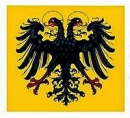
 Particulièrement impitoyable, la guerre à laquelle fut confronté l’État Indépendant Croate entre 1941 et 1945 s’est achevée, en mai 1945, par l’ignoble massacre de Bleiburg (1). Tueries massives de prisonniers civils et militaires, marches de la mort, camps de concentration (2), tortures, pillages, tout est alors mis en œuvre pour écraser la nation croate et la terroriser durablement. La victoire militaire étant acquise (3), les communistes entreprennent, en effet, d’annihiler le nationalisme croate : pour cela, il leur faut supprimer les gens qui pourraient prendre ou reprendre les armes contre eux, mais aussi éliminer les « éléments socialement dangereux », c’est à dire la bourgeoisie et son élite intellectuelle « réactionnaire ». Pour Tito et les siens, rétablir la Yougoslavie et y installer définitivement le marxisme-léninisme implique d’anéantir tous ceux qui pourraient un jour s’opposer à leurs plans (4). L’Épuration répond à cet impératif : au nom du commode alibi antifasciste, elle a clairement pour objectif de décapiter l’adversaire. Le plus souvent d’ailleurs, on ne punit pas des fautes ou des crimes réels mais on invente toutes sortes de pseudo délits pour se débarrasser de qui l’on veut. Ainsi accuse-t-on, une fois sur deux, les Croates de trahison alors que personne n’ayant jamais (démocratiquement) demandé au peuple croate s’il souhaitait appartenir à la Yougoslavie, rien n’obligeait ce dernier à lui être fidèle ! Parallèlement, on châtie sévèrement ceux qui ont loyalement défendu leur terre natale, la Croatie.
Particulièrement impitoyable, la guerre à laquelle fut confronté l’État Indépendant Croate entre 1941 et 1945 s’est achevée, en mai 1945, par l’ignoble massacre de Bleiburg (1). Tueries massives de prisonniers civils et militaires, marches de la mort, camps de concentration (2), tortures, pillages, tout est alors mis en œuvre pour écraser la nation croate et la terroriser durablement. La victoire militaire étant acquise (3), les communistes entreprennent, en effet, d’annihiler le nationalisme croate : pour cela, il leur faut supprimer les gens qui pourraient prendre ou reprendre les armes contre eux, mais aussi éliminer les « éléments socialement dangereux », c’est à dire la bourgeoisie et son élite intellectuelle « réactionnaire ». Pour Tito et les siens, rétablir la Yougoslavie et y installer définitivement le marxisme-léninisme implique d’anéantir tous ceux qui pourraient un jour s’opposer à leurs plans (4). L’Épuration répond à cet impératif : au nom du commode alibi antifasciste, elle a clairement pour objectif de décapiter l’adversaire. Le plus souvent d’ailleurs, on ne punit pas des fautes ou des crimes réels mais on invente toutes sortes de pseudo délits pour se débarrasser de qui l’on veut. Ainsi accuse-t-on, une fois sur deux, les Croates de trahison alors que personne n’ayant jamais (démocratiquement) demandé au peuple croate s’il souhaitait appartenir à la Yougoslavie, rien n’obligeait ce dernier à lui être fidèle ! Parallèlement, on châtie sévèrement ceux qui ont loyalement défendu leur terre natale, la Croatie.

 del.icio.us
del.icio.us
 Digg
Digg
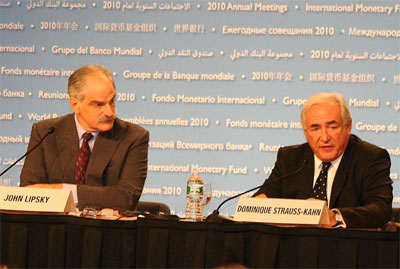



 The death of Alexander Solzhenitsyn produced predictable reactions from Western commentators. Yes, they said, he was a moral giant for so bravely exposing the evils of the Soviet penitential system in
The death of Alexander Solzhenitsyn produced predictable reactions from Western commentators. Yes, they said, he was a moral giant for so bravely exposing the evils of the Soviet penitential system in 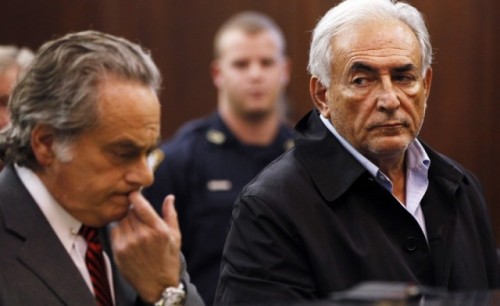

 Lu sous la plume de Jean Luc Eluard dans le magazine gratuit disponible à la FNAC
Lu sous la plume de Jean Luc Eluard dans le magazine gratuit disponible à la FNAC 
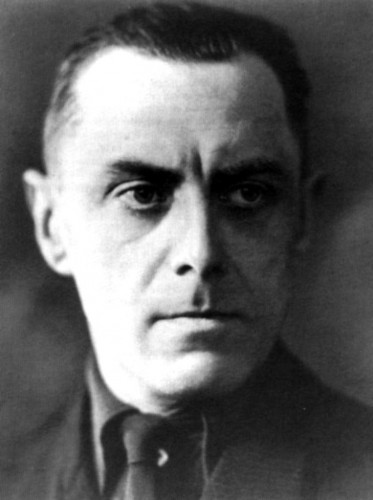
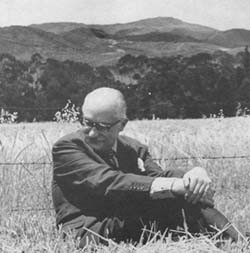
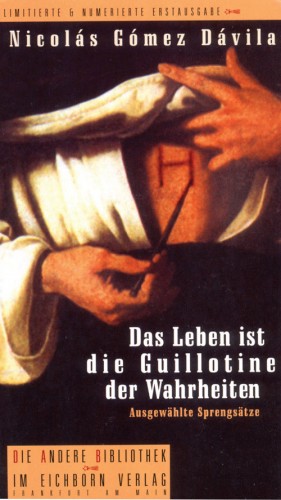 IV: Sensual, skeptical, religious
IV: Sensual, skeptical, religious

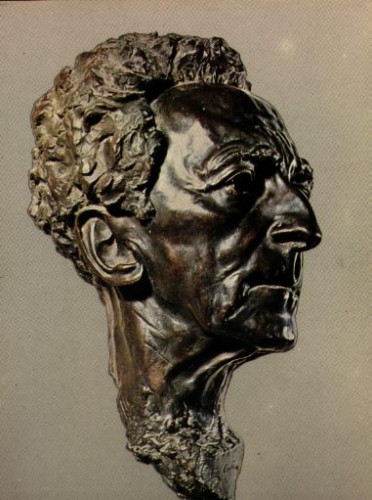 Op dat moment toekomstig Minister van Propaganda Joseph Goebbels, die Breker in Rome had leren kennen, drong er bij hem op aan om terug te keren naar Duitsland, omdat “er hem een grote toekomst te wachten stond”. De jonge en ambitieuze Breker aarzelde niet, zeker niet toen schilder en goede vriend Max Lieberman hem daar ook nog eens toe aanzette. In 1934 keerde Breker terug naar zijn vaderland, waar hij alle voordelen genoot van een protegé van het regime.
Op dat moment toekomstig Minister van Propaganda Joseph Goebbels, die Breker in Rome had leren kennen, drong er bij hem op aan om terug te keren naar Duitsland, omdat “er hem een grote toekomst te wachten stond”. De jonge en ambitieuze Breker aarzelde niet, zeker niet toen schilder en goede vriend Max Lieberman hem daar ook nog eens toe aanzette. In 1934 keerde Breker terug naar zijn vaderland, waar hij alle voordelen genoot van een protegé van het regime.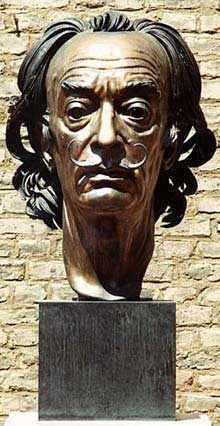 De eerste jaren na het einde van Wereldoorlog II leefde Breker nogal teruggetrokken. Hij maakte van de tijd, die hij afgezonderd was, wel gebruik om na te denken over zijn leven, de keuzes die hij gemaakt had enz. en om opnieuw contact te zoeken met zijn oude (Franse) vrienden, collega’s. Pas sinds de jaren 1950 liepen de opdrachten terug binnen. Deze opdrachten waren vooral inzake schilderijen, bustes (bijvoorbeeld van de Italiaanse dichter Ezra Pound en de Spaanse kunstenaar Salvador Dali) en zelfs enkele architecturale opdrachten (bijvoorbeeld het Gerling-gebouw in Keulen).
De eerste jaren na het einde van Wereldoorlog II leefde Breker nogal teruggetrokken. Hij maakte van de tijd, die hij afgezonderd was, wel gebruik om na te denken over zijn leven, de keuzes die hij gemaakt had enz. en om opnieuw contact te zoeken met zijn oude (Franse) vrienden, collega’s. Pas sinds de jaren 1950 liepen de opdrachten terug binnen. Deze opdrachten waren vooral inzake schilderijen, bustes (bijvoorbeeld van de Italiaanse dichter Ezra Pound en de Spaanse kunstenaar Salvador Dali) en zelfs enkele architecturale opdrachten (bijvoorbeeld het Gerling-gebouw in Keulen).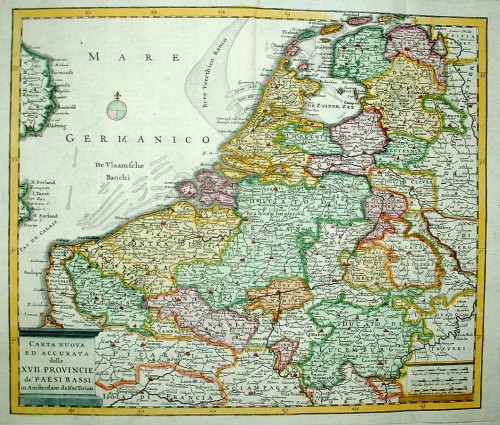





 Ses envolées guerrières, ses insultes faciles et ses outrances, cette exaltation que l’âge ne semblait pas devoir tempérer, tout cela s’étalait au fil de milliers de pages, entre deux hommages à Kelly Minogue ou Bertrand Burgalat. Ses T.D.O. sautaient du coq à l’âne, sans queue ni tête, sans début ni fin, bref, ils ressemblaient beaucoup trop à la vie pour qu’on puisse en tirer quelque chose d’aussi simple qu’un résumé.
Ses envolées guerrières, ses insultes faciles et ses outrances, cette exaltation que l’âge ne semblait pas devoir tempérer, tout cela s’étalait au fil de milliers de pages, entre deux hommages à Kelly Minogue ou Bertrand Burgalat. Ses T.D.O. sautaient du coq à l’âne, sans queue ni tête, sans début ni fin, bref, ils ressemblaient beaucoup trop à la vie pour qu’on puisse en tirer quelque chose d’aussi simple qu’un résumé.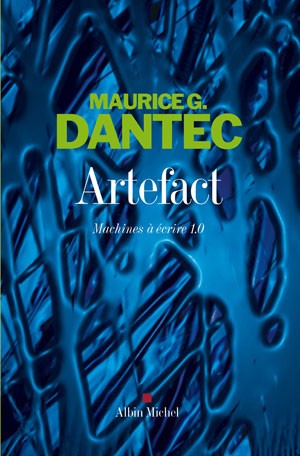 La joie qu’on pouvait sentir chez Maurice Dantec quant à la perspective de la mort prochaine de Saddam Hussein était d’ailleurs obscène. Saddam, qui avait sûrement plus fait pour combattre le fondamentalisme que n’importe qui d’autre. Saddam, qui avait été le seul, après le retrait d’Israël, à envoyer des armes aux chrétiens du Liban à la fin des années quatre-vingt. Saddam, qui avait embauché le chrétien Tareq Aziz comme vice-premier ministre, et donné à un de ses fils un prénom païen de l’ancienne Mésopotamie. Ce Saddam qui, aux yeux de Dantec, ressemblait sûrement trop au méchant idéal dans un film de Chuck Norris. Sa chute fut, hélas, le signal, pour les islamistes, de l’ouverture de la chasse au Chaldéen.
La joie qu’on pouvait sentir chez Maurice Dantec quant à la perspective de la mort prochaine de Saddam Hussein était d’ailleurs obscène. Saddam, qui avait sûrement plus fait pour combattre le fondamentalisme que n’importe qui d’autre. Saddam, qui avait été le seul, après le retrait d’Israël, à envoyer des armes aux chrétiens du Liban à la fin des années quatre-vingt. Saddam, qui avait embauché le chrétien Tareq Aziz comme vice-premier ministre, et donné à un de ses fils un prénom païen de l’ancienne Mésopotamie. Ce Saddam qui, aux yeux de Dantec, ressemblait sûrement trop au méchant idéal dans un film de Chuck Norris. Sa chute fut, hélas, le signal, pour les islamistes, de l’ouverture de la chasse au Chaldéen.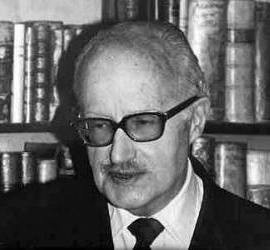 Nicolás Gómez Dávila was born in
Nicolás Gómez Dávila was born in 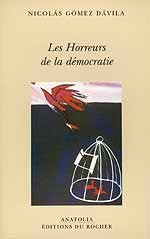 In 1974, he turned down the chance to become the Colombian ambassador at the Court of St. James. Although he was well disposed to both governments, Gómez Dávila had resolved early on in his “career” as a writer to stay out of politics. Although some of his friends were disappointed that he did not accept these offers, they later concluded (according to Mosebach) that he was right to refuse the honors—he would have been a disaster as a practical politician.
In 1974, he turned down the chance to become the Colombian ambassador at the Court of St. James. Although he was well disposed to both governments, Gómez Dávila had resolved early on in his “career” as a writer to stay out of politics. Although some of his friends were disappointed that he did not accept these offers, they later concluded (according to Mosebach) that he was right to refuse the honors—he would have been a disaster as a practical politician. Late in life, Gómez Dávila also wrote two shorter pieces. The first, De iure (De jure) was printed in the spring 1988 issue of the Revista del Colegio Mayor de Nuestra Señora del Rosario. His final work,
Late in life, Gómez Dávila also wrote two shorter pieces. The first, De iure (De jure) was printed in the spring 1988 issue of the Revista del Colegio Mayor de Nuestra Señora del Rosario. His final work,  Anche gli usurai sono uomini, con tutte le loro pruderie sessuali che a causa dell’età non riescono a tenere adeguatamente sotto controllo. Come italiani non possiamo quindi che essere grati a Dominique Strauss Kahn, direttore generale del Fondo monetario internazionale, per aver dimostrato che certi fenomeni, ai piani alti o ai piani bassi del potere, non sono una peculiarità solo italiana. Così i mangia ranocchie di oltralpe la smetteranno di sfotterci per le disavventure erotiche di Berlusconi.
Anche gli usurai sono uomini, con tutte le loro pruderie sessuali che a causa dell’età non riescono a tenere adeguatamente sotto controllo. Come italiani non possiamo quindi che essere grati a Dominique Strauss Kahn, direttore generale del Fondo monetario internazionale, per aver dimostrato che certi fenomeni, ai piani alti o ai piani bassi del potere, non sono una peculiarità solo italiana. Così i mangia ranocchie di oltralpe la smetteranno di sfotterci per le disavventure erotiche di Berlusconi.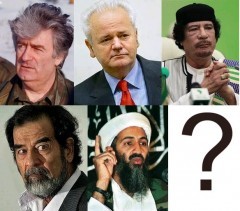



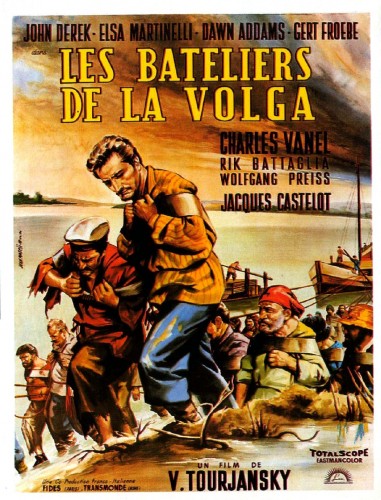
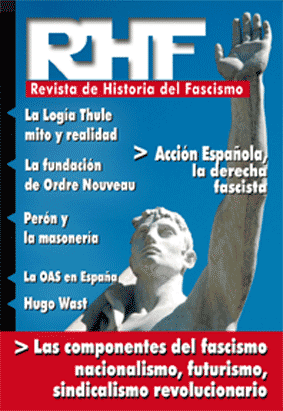
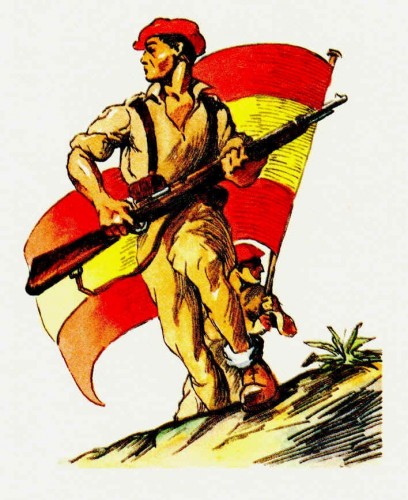
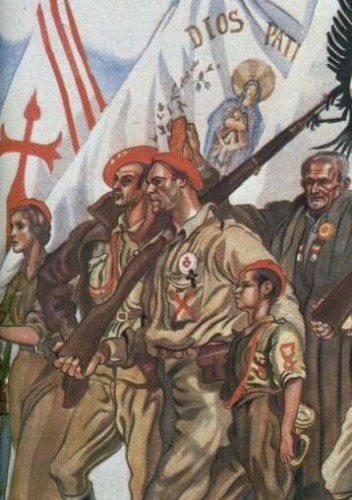 Er zijn echter 4 begrippen die doorheen de geschiedenis van het Carlisme steeds terugkeren en duidelijk op de voorgrond staan: Dios, Patria, Fueros, Rey.
Er zijn echter 4 begrippen die doorheen de geschiedenis van het Carlisme steeds terugkeren en duidelijk op de voorgrond staan: Dios, Patria, Fueros, Rey.
